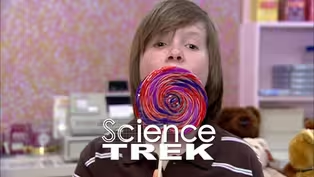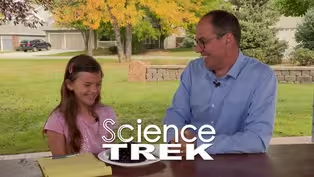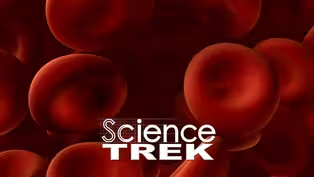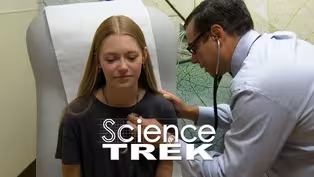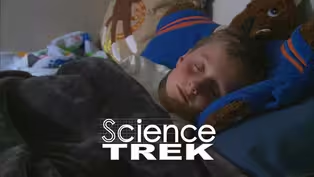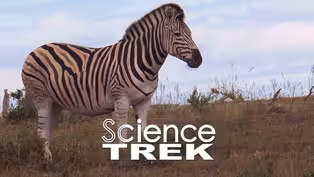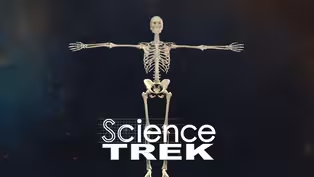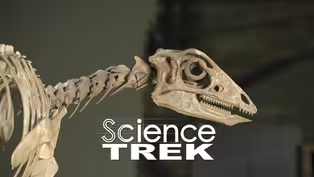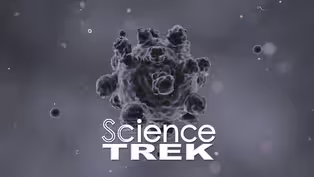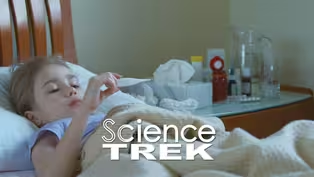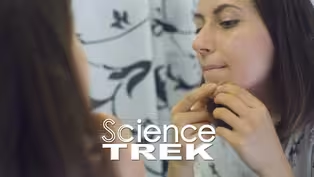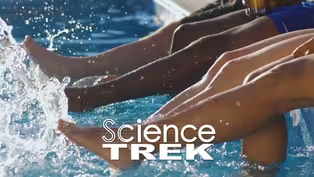
Skin: Skin Deep
Special | 4m 53sVideo has Closed Captions
Learn how your skin helps maintain your health and keeps you in touch with the world.
Your skin is your body’s largest organ. It’s a complex collection of cells, nerves, blood vessels and glands. It helps regulate your body temperature, protects you from disease and injury and helps you navigate your world. Find out more about this amazing part of your body.
Problems playing video? | Closed Captioning Feedback
Problems playing video? | Closed Captioning Feedback
Science Trek is a local public television program presented by IdahoPTV
Major Funding by the Laura Moore Cunningham Foundation and the Idaho National Laboratory. Additional Funding by Sparklight, the Friends of Idaho Public Television and the Corporation for Public Broadcasting.

Skin: Skin Deep
Special | 4m 53sVideo has Closed Captions
Your skin is your body’s largest organ. It’s a complex collection of cells, nerves, blood vessels and glands. It helps regulate your body temperature, protects you from disease and injury and helps you navigate your world. Find out more about this amazing part of your body.
Problems playing video? | Closed Captioning Feedback
How to Watch Science Trek
Science Trek is available to stream on pbs.org and the free PBS App, available on iPhone, Apple TV, Android TV, Android smartphones, Amazon Fire TV, Amazon Fire Tablet, Roku, Samsung Smart TV, and Vizio.
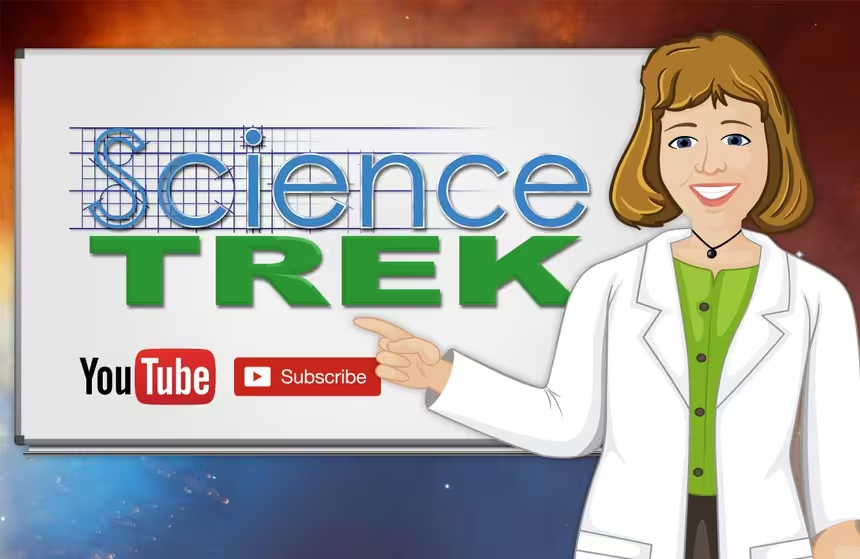
Science Trek
Science Trek is a place where parents, kids, and educators can watch short, educational videos on a variety of science topics. Every Monday Science Trek releases a new video that introduces children to math, science, technology, engineering, and math (STEM) career potentials in a fun, informative way.More from This Collection
The human body is an amazing thing. It is made up of various systems that work together to keep us breathing, eating, thinking, growing and playing. Find out more about everything from the brain in your head to the bones in your feet.
Five Senses: It's All in Your Head
Video has Closed Captions
You understand the world through your brain. (6m 38s)
Blood: Your Body's Report Card
Video has Closed Captions
Learn about the role medical professional have in caring for your blood. (5m 40s)
Digestive System: Go Inside The Digestive System
Video has Closed Captions
What goes on inside your digestive system? (7m 7s)
Digestive System: Cow Stomach Investigation
Video has Closed Captions
How is a cow’s stomach different from a human’s? (6m 40s)
Skeletons: Skeletons Uncovered
Video has Closed Captions
Your skeleton is more than a collection of bones. Find out how your skeletal system works. (4m 3s)
Skeletons: Just How Do They Know It’s A Dinosaur?
Video has Closed Captions
Paleontologists study skeletons to learn about ancient species. (6m 12s)
Video has Closed Captions
Viruses play a big role in disease. But how? (6m 33s)
Viruses: Antibodies To The Rescue
Video has Closed Captions
Antibodies are your body’s way of fighting disease. (6m 26s)
Providing Support for PBS.org
Learn Moreabout PBS online sponsorshipJoan Cartan-Hansen, Host: Your skin is one of the most important organs in your body.
But look a little closer.
It isn't just one long sheet.
It's a complex collection of cells, nerves, blood vessels and glands.... [MUSIC] Student One: Boy, is it hot out here.
Student Two: Yeah, did you want some sunscreen?
Student One: Why would I want sunscreen?
Student Two: To protect your skin.
Student One: I don't need to protect my skin.
Cartan-Hansen: You better believe you do.
Your skin is like a coat of armor.
It shields your bones and protects your internal organs from being hurt.
It helps regulate your temperature.
It keeps out germs and helps you feel things.
Without skin, you wouldn't survive.
Student Two: Tell me more.
Cartan-Hansen: Well, the outside layer of skin is known as the epidermis.
It's remarkably elastic and in most places, covered with a fine coat of hair.
It is a tough layer that's waterproof and seals out invading germs.
But it wears away, shedding millions of dead skin cells every minute.
And underneath new cells constantly replace the old.
The layer beneath that is the dermis, which is packed with blood vessels, nerves, hair follicles and sweat glands.
A network of fibers, elastin and collagen, hold and connect this layer together.
Below that is the hypodermis.
This layer connects to the bones and muscles underneath.
It also contains fat cells that insulate the body and acts as a cushion to protect the body from blows.
The fat also serves as an energy reserve.
And, when you are overweight, that layer is where the extra fat is stored.
Student One: That's interesting.
But, I'm still hot.
Cartan-Hansen: Well, the skin does play a very important role in keeping you the right temperature.
When you get too hot, sweat oozes up and out tiny holes called sweat pores on to your skin.
Even your fingertip has dozens of sweat glands just below the surface.
Sweat cools your body by evaporation.
And when you are too cold, the blood vessels in your skin get narrower and tiny muscles pull the fine hair on your body upright to trap air and create a layer of insulation.
Your skin works to regulate your body's temperature to keep you feeling just right.
And feeling is something your body does too.
Touch is the first sense we develop.
Inside our skin, we have millions of tiny touch sensors that send signals to our brain, detecting everything from the prick of a pin point to our movement in the world around us.
But not all parts of our skin are equally sensitive.
Lips and hands have more touch sensors than our back or legs.
If every part of our body was drawn in proportion to how sensitive it is to touch...this is what your body would look like.
And what part of your body has the most touch sensors...why, the tip of your tongue.
Student Two: Really?
Cartan-Hansen: And your skin has an amazing ability to mend itself.
When you get a cut, your skin automatically starts to block infectious bacteria from getting in and to keep fluids from leaking out.
Blood clots and cells multiply from all sides until the wound is healed.
And as you age, your skin becomes less elastic and you get wrinkles.
By the way, the color of your skin depends on how much melanin it contains.
Below the first layers of skin are special pigment cells that make melanin.
When your skin is exposed to the sun, more melanin is pushed into the skin.
People whose ancestors lived in and around the equator have darker skin to protect themselves from the harsher sun.
Those who came from nearer the poles didn't get as much sun, so their skin didn't need as much melanin so it stayed lighter.
And freckles are just bits of melanin in the skin.
But melanin can't completely protect your skin.
If you get too much sun, you get a red sun burn.
Sun burns can actually damage your skin.
And that can lead to premature aging of the skin as an adult.
And excessive sun exposure is the leading cause of skin cancer.
So, every time you go out in the sun use sun screen.
Take care of your skin and your skin will take care of you.
Student One: Hand me the bottle.
Cartan-Hansen: If you want to learn more about the skin, check out the science trek website.
You'll find it at science trek dot org.
[MUSIC] ANNOUNCER: Presentation of Science Trek on Idaho Public Television is made possible through the generous support of the Laura Moore Cunningham Foundation, committed to fulfilling the Moore and Bettis family legacy of building the great state of Idaho.
By the Idaho National Laboratory, mentoring talent and finding solutions for energy and security challenges, by The Friends of Idaho Public Television and by the Corporation for Public Broadcasting.
Video has Closed Captions
Clip: Special | 1m 4s | Why does your skin break out in zits? (1m 4s)
Skin: Stretched, Shed and Tinted
Video has Closed Captions
Clip: Special | 1m 4s | What is melanin? (1m 4s)
Providing Support for PBS.org
Learn Moreabout PBS online sponsorship
- Science and Nature

Explore scientific discoveries on television's most acclaimed science documentary series.

- Science and Nature

Capturing the splendor of the natural world, from the African plains to the Antarctic ice.












Support for PBS provided by:
Science Trek is a local public television program presented by IdahoPTV
Major Funding by the Laura Moore Cunningham Foundation and the Idaho National Laboratory. Additional Funding by Sparklight, the Friends of Idaho Public Television and the Corporation for Public Broadcasting.
